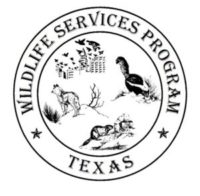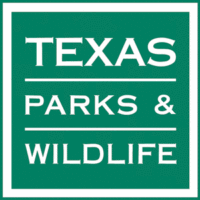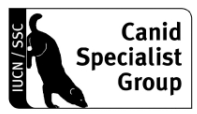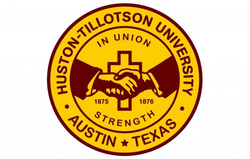
The mission of the East Foundation is to support wildlife conservation and other public benefits of ranching and private land stewardship.
Our mission is achieved through research, education, and outreach and is reflected in our purpose:
- Educate the general public on wildlife conservation and the relationship of wildlife with livestock and ranching.
- Use scientific research to understand and improve the productivity of native rangelands for both wildlife conservation and livestock production
- Manage our ranchlands as a working laboratory that includes cattle ranching as an integral part of the overall operations of the foundation

The mission of Wildlife Services (WS) is to provide Federal leadership in managing problems caused by wildlife.
WS recognizes that wildlife is an important public resource greatly valued by the American people. By its very nature, however, wildlife is a highly dynamic and mobile resource that can damage agricultural and industrial resources, pose risks to human health and safety, and affect other natural resources. The WS program carries out the Federal responsibility for helping to solve problems that occur when human activity and wildlife are in conflict with one another.
The WS program strives to develop and use wildlife damage management strategies that are biologically sound, environmentally safe, and socially acceptable. WS also strives to reduce damage caused by wildlife to the lowest possible levels while at the same time reducing wildlife mortality. This approach represents the future towards which WS is moving. In charting this course, WS must continuously improve and modify wildlife damage management strategies.

The cooperative Texas Wildlife Services (WS) Program provides resolution to human/wildlife conflicts across the State, improving the lives of thousands of Texans each year. First organized in 1915 to address predator losses to livestock, the program has grown into an internationally recognized model for responsible solutions to wildlife conflicts. While funded from a variety of sources, the program effectively blends State and Federal resources and responsibilities to address conflicts with agriculture, property, human health and safety and natural resources while still protecting wildlife.

Texas Parks & Wildlife Department
The mission of TPWD is to manage and conserve the natural and cultural resources of Texas and to provide hunting, fishing and outdoor recreation opportunities for the use and enjoyment of present and future generations.
In fulfilling this mission, TPWD will:
- Be a recognized national leader in implementing effective natural resources conservation and outdoor recreational programs
- Serve the state of Texas, its citizens, and our employees with the highest standards of service, professionalism, fairness, courtesy, and respect
- Rely on the best available science to guide our conservation decisions
- Responsibly manage agency finances and appropriations to ensure the most efficient and effective use of tax-payer and user fee resources
- Attract and retain the best, brightest, and most talented workforce to successfully execute our mission

The mission of the IUCN Canid Specialist Group is to promote the long-term conservation of all wild Canidae species throughout their ranges.
Five of the 35 canid taxa are threatened: Darwin’s fox and red wolf are listed as Critically Endangered, while Ethiopian wolf, African wild dog and dhole are Endangered. The bush dog, maned wolf, Sechura fox, short-eared dog, and island fox are listed as Near Threatened. Others are rare and even declining, while many wild canids are too common for their own good, and thus are involved in major wildlife management issues (such as disease transmission, predation on livestock, sport hunting, fur trade).
All CSG members are actively involved in canid conservation and research, and serve as honorary advisers, bringing with them the experience and the knowledge gained in their professional careers.

International Jackal Symposium
The aim of the International Jackal Symposium is to create a fertile ground for productive discussions between novice and experienced scientists in the field of the golden jackal (Canis aureus) research, ecology, conservation, and management, as well as other related species such as the grey wolf (Canis lupus), African black-backed jackal (Canis mesomelas), side-striped jackal (Canis adustus), African wolf (Canis anthus), Ethiopian wolf (Canis simensis), and coyote (Canis latrans).
The first and second symposiums were held in Serbia in 2017 and Greece in 2018, respectively.

Berryman Institute at Utah State University
The Berryman Institute is dedicated to improving human-wildlife relationships and resolving human-wildlife conflicts through teaching, research, and extension.
Human–Wildlife Interactions exists to serve the professional needs of the wildlife biologist and manager in the arena of human–wildlife conflicts/interactions, wildlife damage management, and contemporary wildlife management. The intent of HWI is to publish original contributions on all aspects of contemporary wildlife management and human–wildlife interactions. We place an emphasis on scientific research and management case studies that identify and report innovative conservation strategies, technologies, tools, and partnerships that can enhance human–wildlife interactions by mitigating human–wildlife conflicts through direct and indirect management of wildlife and increased stakeholder engagement. Our intent is to promote a dialogue among wildlife professionals and their stakeholders concerning contemporary human-wildlife management issues. In doing so, we hope to provide a permanent repository for human-wildlife conflict management science and case studies that document and share manager experiences and lessons learned with others.

HT nurtures a legacy of leadership and excellence in education, connecting knowledge, power, passion, and values.
Following the merger of Samuel Huston College and Tillotson College in 1952, Huston-Tillotson College became the sole provider of higher education for African-Americans in Central Texas until the landmark case of Brown v. Board of Education (1954), which launched the period of desegregation. Today the College continues to both honor and foster its relationship with its founding denominations as well as its ethnic heritage. On February 28, 2005, the institution advanced its mission further by changing the name to Huston-Tillotson University.